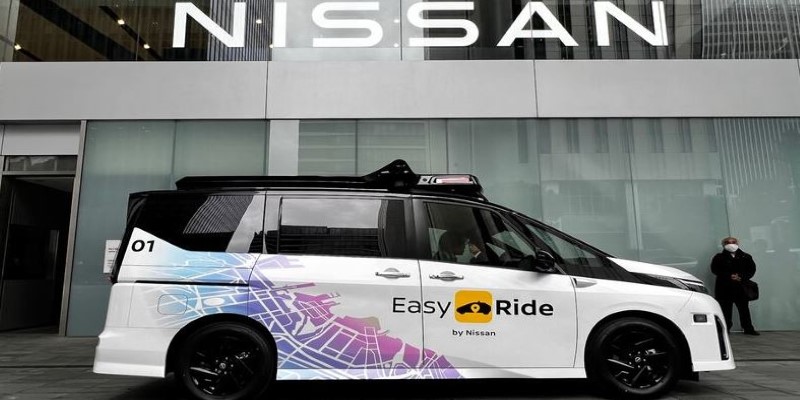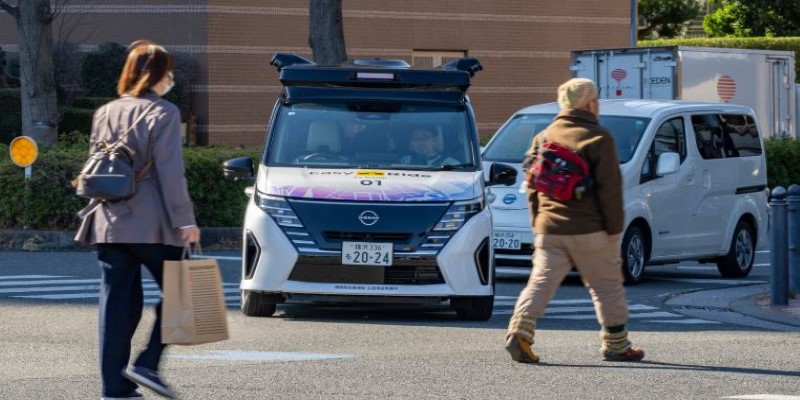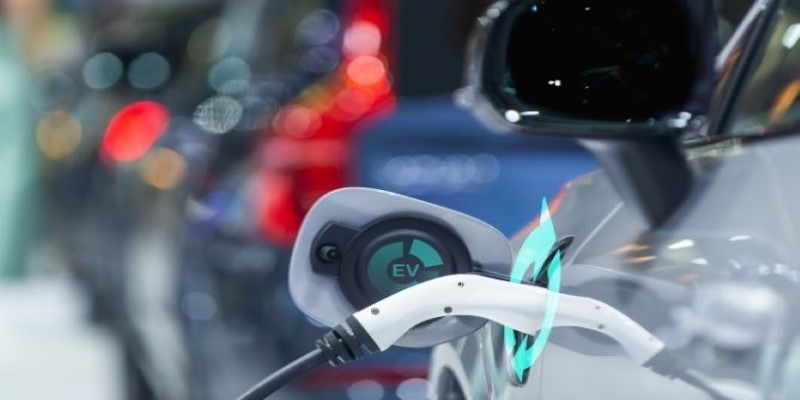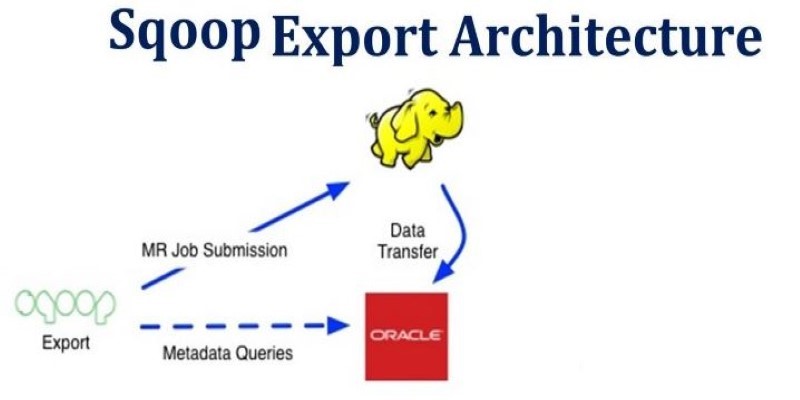Advertisement
When a driverless car takes a turn without a steering wheel being touched or a foot pressing the brake, it still surprises people, even in 2025. In Japan, that surprise has begun to feel like a quiet preview of what's to come. Nissan, one of the country's most recognizable automakers, is putting its new AI-powered driverless technology through public road testing, a major step beyond closed-course demos. These aren't test tracks or controlled simulations. These are everyday streets, with real traffic, pedestrians, construction, and all the unpredictability that comes with it. It's not science fiction. It's rolling through Tokyo right now.
Nissan's move to test AI-powered driverless tech in actual city conditions isn't just about optics. The streets of Japan present a layered challenge—narrow lanes, fast cyclists, unpredictable weather, sudden stops, and crowded intersections. The company's goal is to train its autonomous system in environments that can't be recreated in a lab or simulation. Their vehicle, equipped with cameras, LiDAR, radar, and the company's proprietary ProPILOT driver-assistance system, has been upgraded with a new generation of AI that enables real-time decision-making for driving.
This AI stack isn't just monitoring obstacles—it also predicts them. By using machine learning models trained on years of driving footage, Nissan's system anticipates not only what is happening but also what might happen next. That's a massive leap from reactive to predictive behavior. A child near a sidewalk? The AI doesn't just recognize them; it calculates whether they’re likely to cross, even before they make a move. This predictive modeling is at the heart of Nissan’s push toward full autonomy.
While Tesla and Waymo have pursued similar paths, Nissan's approach stands out by leaning into Japan's legal and infrastructural context. Rather than waiting for sweeping regulatory changes, Nissan has worked closely with Japanese transportation authorities to run these vehicles under controlled permits on limited routes. That allows the company to gather real-world data without having to entirely overhaul existing road laws. And that cooperation matters—especially in a country known for caution when it comes to road safety.
Nissan's self-driving car system doesn’t run on a single model—it’s an ensemble of AI tools working together. The perception layer uses computer vision to identify road objects, lane markings, and traffic signs. Beyond identification, a second layer of neural networks processes behavioral patterns—how drivers in different neighborhoods act, how traffic ebbs and flows at certain hours, and how to adjust for cultural norms, such as bowing to pedestrians or yielding at awkward crosswalks.

One standout feature is adaptive learning. Instead of static programming, the vehicle refines its behavior as it logs more miles. It’s not just relying on training data from years ago. It learns from this morning’s drive through Yokohama. Each traffic jam, sharp turn, and blind alley contributes to a feedback loop that updates the system’s responses in near real time. That’s where the AI-powered driverless tech differs from older autonomous models. It doesn’t just learn before hitting the road—it keeps learning on the road.
What's also different is how Nissan combines AI with human backup. During testing, a remote human operator monitors the vehicle's behavior and can intervene if needed. Like air traffic control for cars, the vehicle operates on its own most of the time, but that safety net adds trust and compliance, especially during early public rollouts. It's a cautious and transparent way for the public and regulators to observe, with safeguards in place.
The secondary benefit? Public perception. Japan’s population skews older, and trust in automation isn’t universal. By showing a hybrid setup with human supervision during initial public road use, Nissan builds confidence gradually. It’s a step-by-step introduction when safety is involved.
Japan blends tradition with tech. It has advanced rail systems, yet driving remains necessary, especially outside cities. With a declining birth rate and aging population, autonomous vehicles can help fill labor gaps in logistics and taxis. Nissan's AI project isn’t just about passengers—it aims to solve a growing transportation problem.
Public buses are being cut in rural areas. Delivery services lack drivers. Emergency response teams are stretched in hard-to-access places. If driverless tech matures fast enough, these problems can be fundamentally restructured. Nissan plans to adapt its system for small delivery vans and shuttles. The potential goes beyond personal cars.
Japan’s cautious regulations and dense urban layout create an ideal environment to push the technology to its limits. The government has approved limited geofenced areas for autonomous vehicles, like suburban streets in Yokohama and designated corridors in Tokyo. These real-world labs let companies refine systems under practical conditions rather than artificial tests.
That’s why Nissan’s AI focuses on local conditions. Instead of a global system needing constant localization, Nissan is solving the Japanese market first, with plans to expand once proven. It’s not flashy. It’s precise.
Nissan isn’t trying to outshine rivals with flashy stunts. Its approach is quieter, building data, experience, and confidence. That strategy might pay off. Where others chase range or hands-free miles, Nissan focuses on real situations: tight corners, complex intersections, tricky pedestrian patterns. These are the real hurdles of urban autonomy, not easily solved with brute force or marketing.

When Nissan rolls a driverless car through a public road in Japan, it’s not just proving the AI works. It shows it can handle real-world messiness without special treatment. It’s learning not just how to drive, but how to drive like a local.
This doesn't mean we'll see Nissan robotaxis on every corner tomorrow. But the foundation is being laid now, quietly, on public roads. With each test run, a page is added to a manual that future autonomous cars will study. With every mile, the system sharpens. With every update, it learns. Nissan’s driverless future isn’t rushing toward us. It’s cruising patiently in a lane of its own.
Nissan’s driverless car on real Japanese roads isn’t just a milestone—it’s a sign of real progress. Without fanfare, these machines show they can handle everyday chaos. Each successful trip chips away at doubt and builds something harder to earn: trust. This quiet confidence signals that autonomous vehicles aren’t just possible—they’re learning to earn their place among us, one careful mile at a time.
Advertisement

Explore how generative AI transforms content, design, healthcare, and code development with practical tools and use cases

Looking for faster, more reliable builds? Accelerate 1.0.0 uses caching to cut compile times and keep outputs consistent across environments

What happens when blockchain meets robotics? A surprising move from a blockchain firm is turning heads in the AI industry. Here's what it means

If you want to assure long-term stability and need a cost-effective solution, then think of building your own GenAI applications

Beginner's guide to extracting map boundaries with GeoPandas. Learn data loading, visualization, and error fixes step by step

How the EV charging industry is leveraging AI to optimize smart meter data, predict demand, enhance efficiency, and support a smarter, more sustainable energy grid

How agentic AI is driving sophisticated cyberattacks and how the UK AI Opportunities Action Plan is shaping industry reactions to these risks and opportunities

How Apache Sqoop simplifies large-scale data transfer between relational databases and Hadoop. This comprehensive guide explains its features, workflow, use cases, and limitations

Google's Willow quantum chip boosts performance and stability, marking a big step in computing and shaping future innovations

Learn different ways of executing shell commands with Python using tools like os, subprocess, and pexpect. Get practical examples and understand where each method fits best

Discover how Case-Based Reasoning (CBR) helps AI systems solve problems by learning from past cases. A beginner-friendly guide

Explore the role of a Director of Machine Learning in the financial sector. Learn how machine learning is transforming risk, compliance, and decision-making in finance